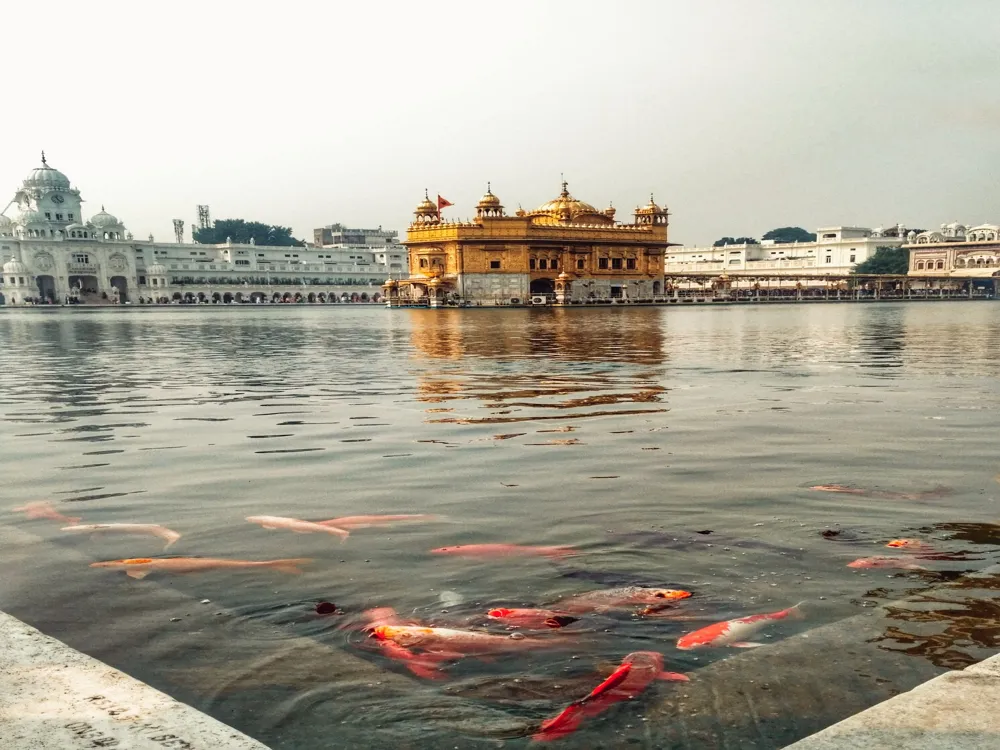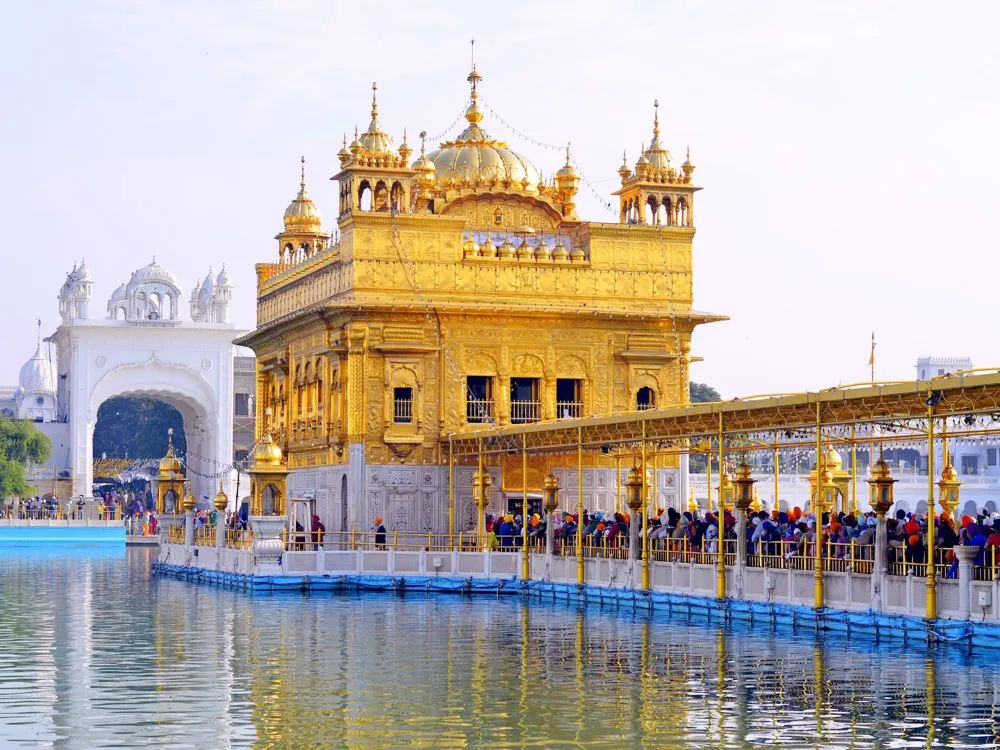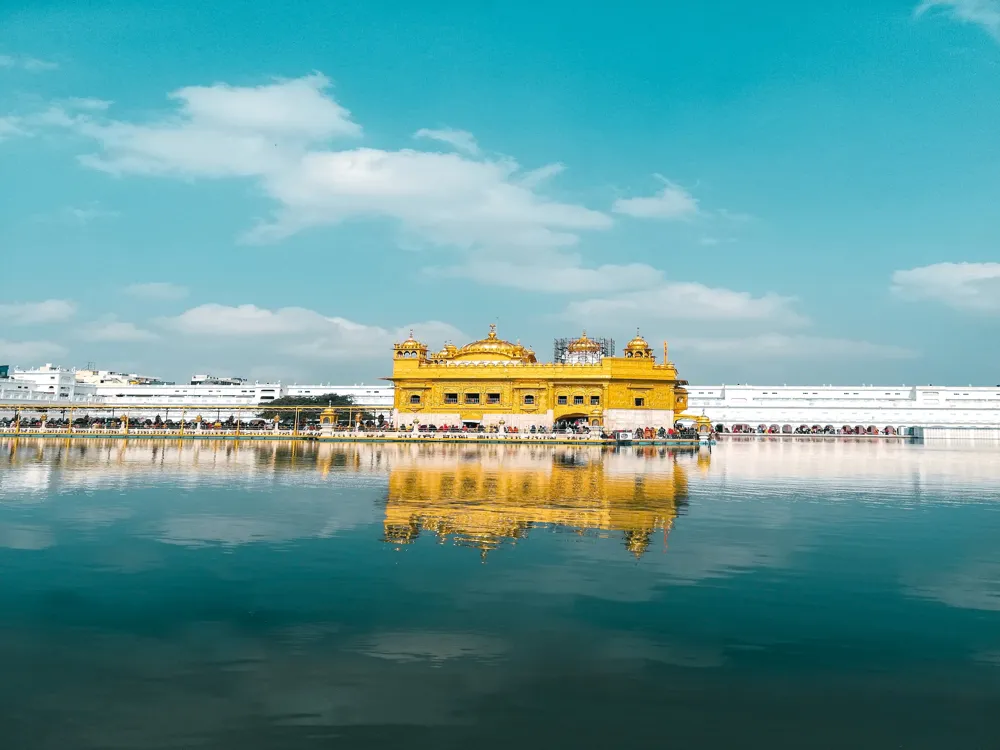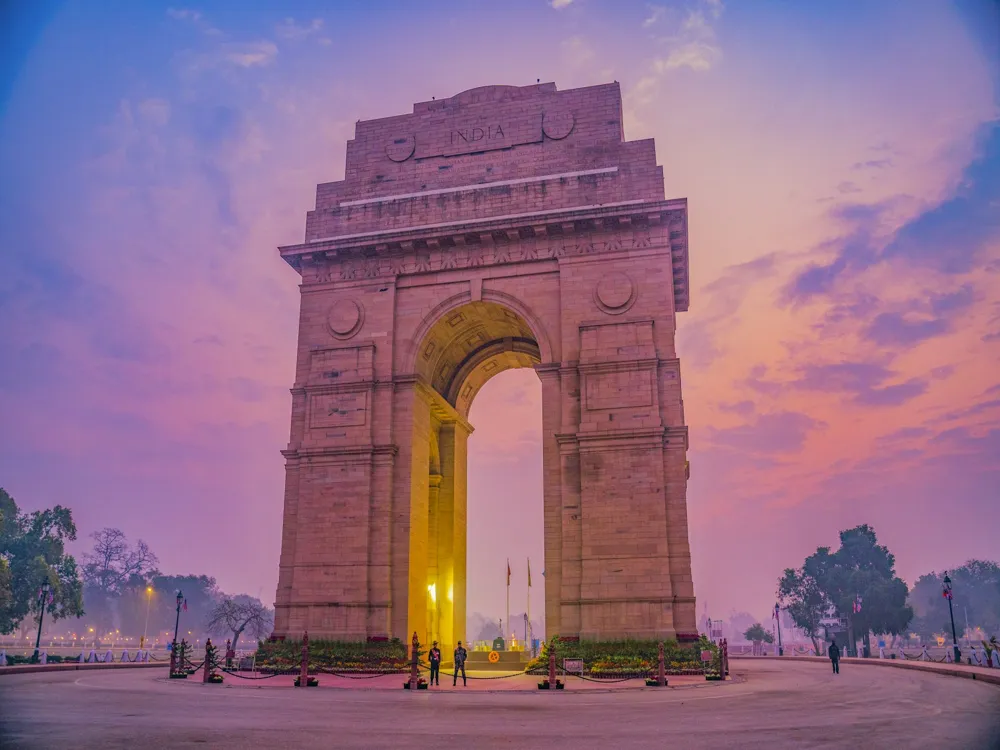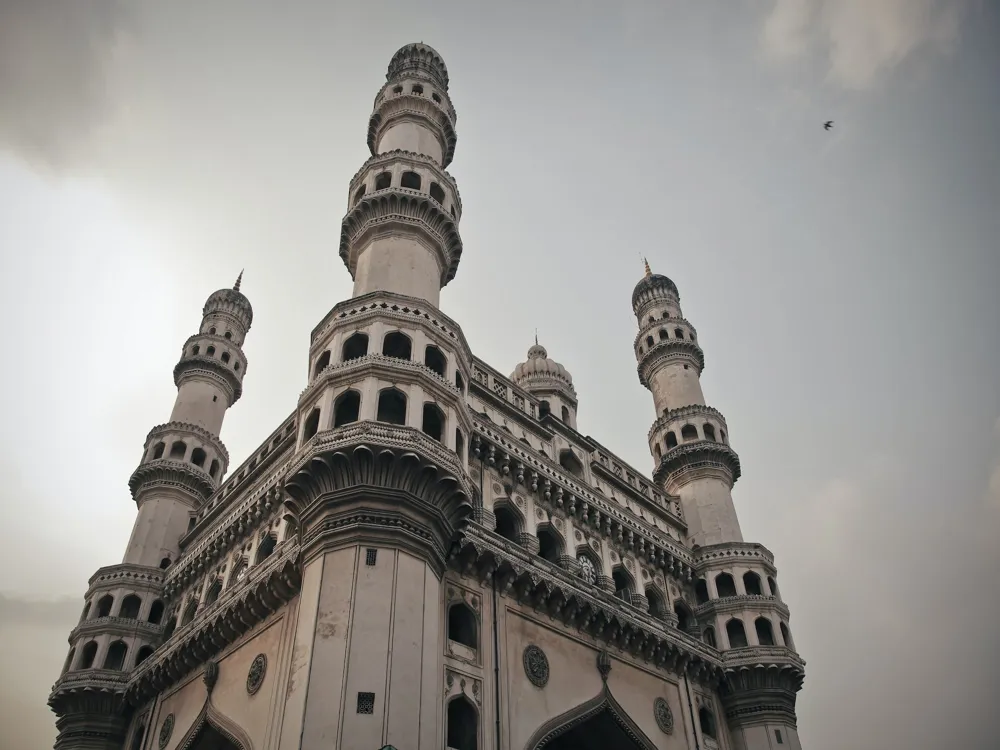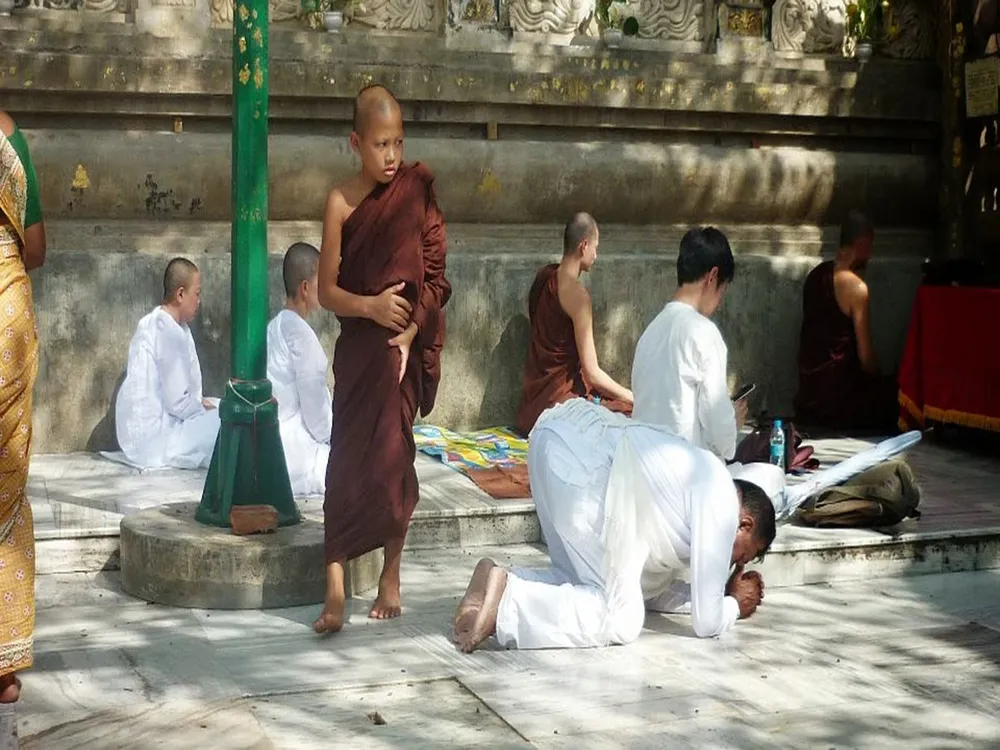Plan Your Travel To Amritsar
Places To Visit In Amritsar
Guru Ke Mahal
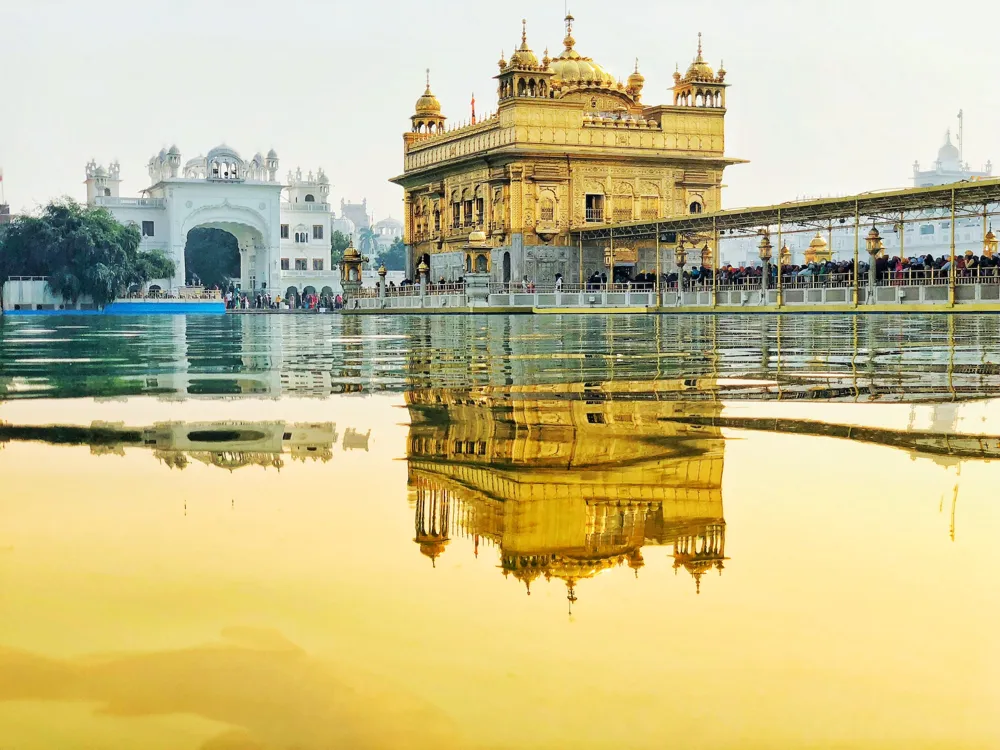
Housing the Granth Sahib and their gurus, Guru Ke Mahal was founded by Guru Ram Das in 1573 as a little cottage that went on to shelter the great gurus of the Sikhs. Gurudwara Guru Ke Mahal is a humble hut situated at the main street of Guru Bazaar near the Golden Temple in the holy city of Ramdaspur (now known as Amritsar).
Earlier a residence of Sri Guru Ram Das, the founder of Amritsar city, the structure was modified into a Gurudwara. It is a three-storey tabernacle with a raised platform where the holy book of the Sikhs, Guru Granth Sahib is placed. The structure of the Mahal is divided into three floors. The basement serves as a meditation room where the Gurus used to meditate. The upper floor has space for sitting together and participating in kirtans. The topmost floor has encored the Guru Granth Sahib. It is believed that Sri Guru Tegh Bahadur was born in the Mahal on Baisakhi. Thus Baisakhi marks his birth anniversary as well. Besides the daily rituals, special kirtans and langar called Guru ke Langar are organized on Baisakhi. Hundreds of Sikhs and tourists visit this religious site on Guru Tegh Bahadur Jayanti. Founded by Sri Guru Ram Das Ji, this humble little hut soon came to be identified as the headquarters of Sikh gurus, though shifted in near time. Enlarged and beautified by the successive gurus, this little cottage truly took the shape of a Mahal.
Read More
Gurudwara Baba Atal Rai
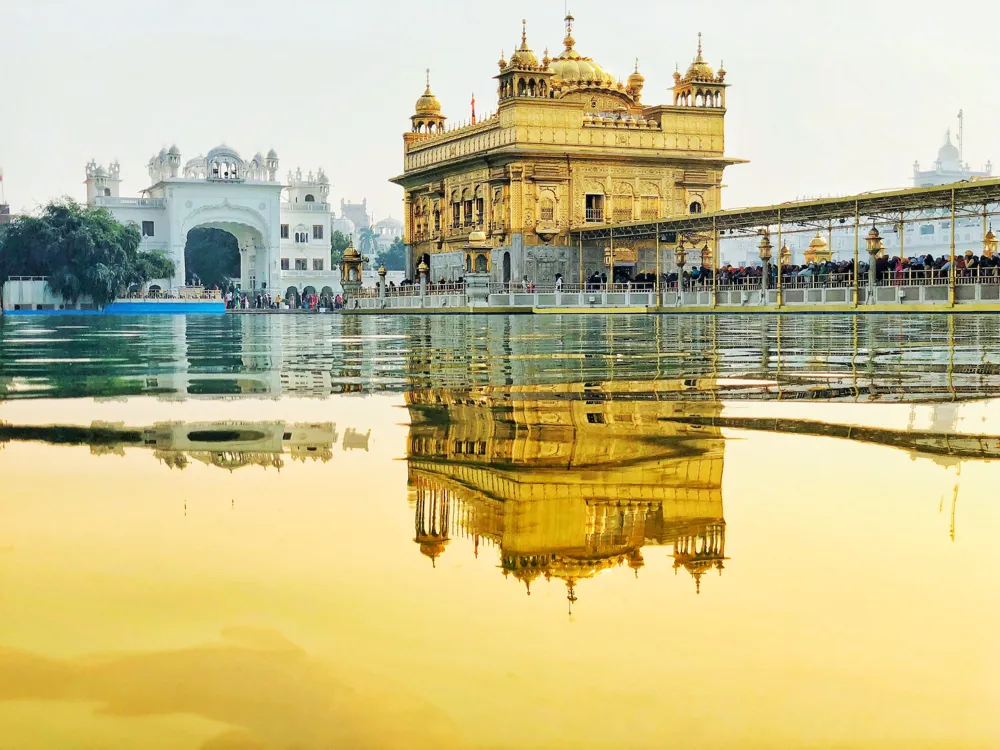
Gurudwara Baba Atal Rai is located inside the Golden Temple complex in Amritsar. The historic shrine was built in honour of Baba Atal Rai, son of Guru Har Gobind Singh. The 9 storey octagonal tower represents a year in Atal Rai’s life as he passed away at the young age of 9. Originally, a samadhi of Baba Atal Rai the building slowly began transformed into a Gurudwara. It is the tallest tower in Amritsar alongside the Kaulsar Sarovar. This architectural marvel is one of the most visited attractions in Punjab, with millions of pilgrims coming from all around the world. The tower houses many miniature paintings of the life and teachings of Guru Nanak, the first Sikh Guru. The last storey of the tower offers visitors a birds-eye view of the bustling town of Amritsar. Not just a symbol of glory and artistic richness, but it also stands as a reminder of the divine power of Baba Atal Rai.
The age-old belief among the Sangat and devotees is that having a dip in the holy water of Kaulsar Sarovar brings mysterious wide-spread showers in Amritsar. 'Baba Atal Pakiyan Pakaiyan Ghal' is an old saying which means that Baba Atal Rai has sent us already cooked food. The langar at the Gurudwara serves the visitors 24 hours a day and is said to be the only continuous langar in Amritsar. This has been possible only through the volunteering service of Gursikhs.
Read More
Gurudwara Baba Deep Singh Ji
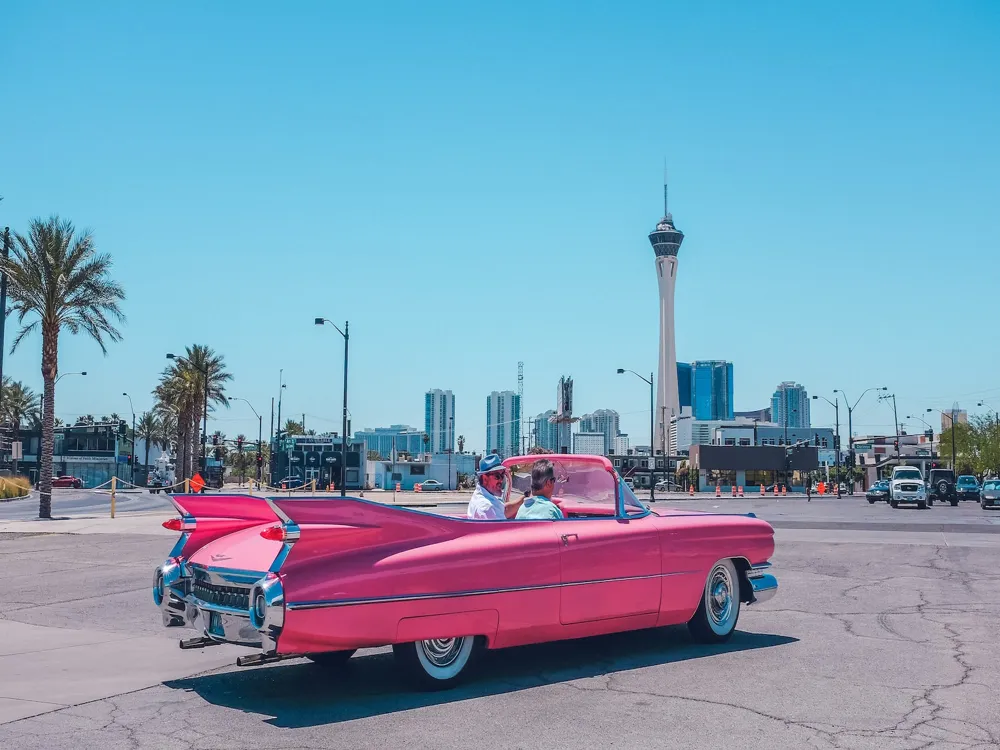
Located in Amritsar outside the Chatiwind gate is Gurudwara Baba Shaheed Deep Singh Ji, honouring the valour and martyrdom of Baba Deep Singh Ji, which is why it is also known as the Shahidan Sahib. He was specially renowned for his contribution during 1757 when he fought the Afghani troops led by Ahmed Shah Abdali, from attacking, invading, and blowing up the Golden Temple. He fought bravely alongside thousands of others but was fatally wounded during the fight.
Even though he was badly wounded in the neck, he had vowed to take his last breath at Harmandir Sahib and so he fought with all his might and made it all the way back to Amritsar where he finally passed away. Sardar Jassa Singh of Ramgarhia constructed this memorial to commemorate Baba Deep Singh Ji’s sacrifice. It was later in the 1920s when Shiromani Gurudwara Prabandhak Committee developed this memorial site into the Gurudwara that we see today.
Read More
Gurudwara Bir Baba Budha Sahib
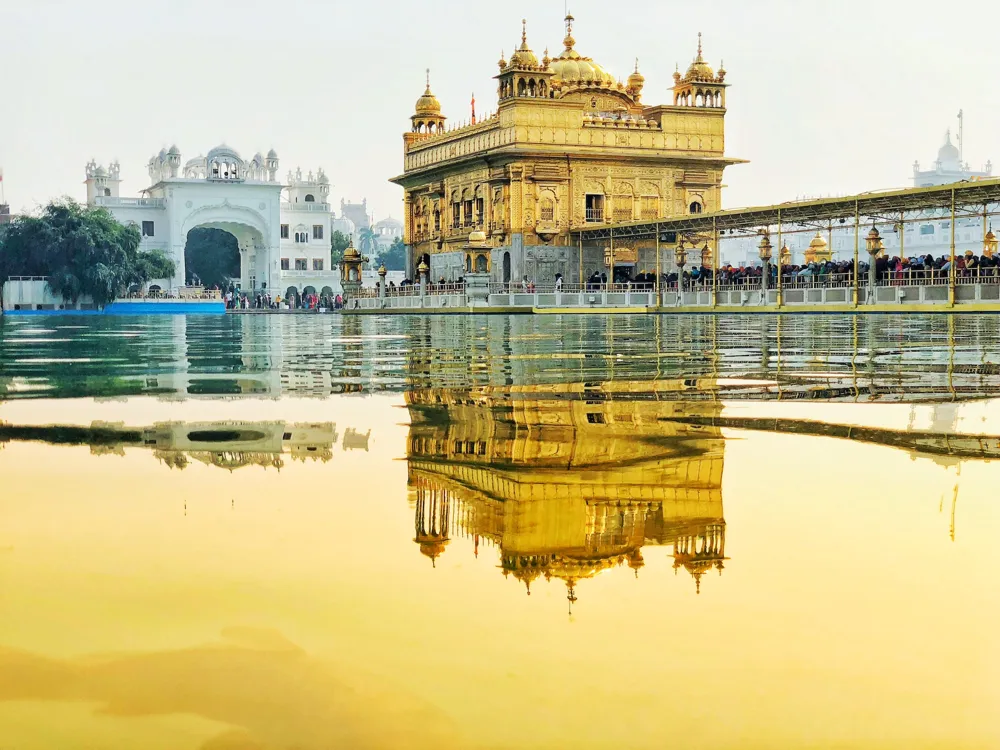
Gurudwara Bir Baba Budha Sahib, also known as Bir Sahib, is a Gurudwara dedicated to Baba Budha Ji. The Gurudwara lies south of Amritsar, near the village of Jhabal Kalan, at a distance of 20 Kms. One can hire a private taxi to reach the Gurudwara. On the way to the Gurudwara, tourists can see the rich green paddy and wheat fields of Punjab, showcasing an essence of true rural Punjab. Baba Buddha, who lived for 125 years, was the first Granthi, blessed by the first Sikh Guru Guru Nanak Dev as a boy, and went on to anoint the five succeeding Gurus. Inside the Gurudwara, the holy Guru Granth Sahib is placed on a canopied seat made of white marble. Devotees come to this Gurudwara to seek blessings from Baba Buddha in hopes of a child, as was the case with Guru Arjan Dev, the fifth Sikh Guru, who came to Baba Buddha in hopes of being blessed with a child.
The Gurudwara, in honour of the meal prepared by Mata Ganga, still serves Missi roti and onion as Prashad. Near the Gurdwara in a separate compound, there is a two-storied residential block, the Guru Ka Langar and a large dining hall. Each Bikrami month devotees in large numbers attend the celebrations, making it the biggest function of the year at this historic site.
Read More
Gurudwara Chheharta Sahib
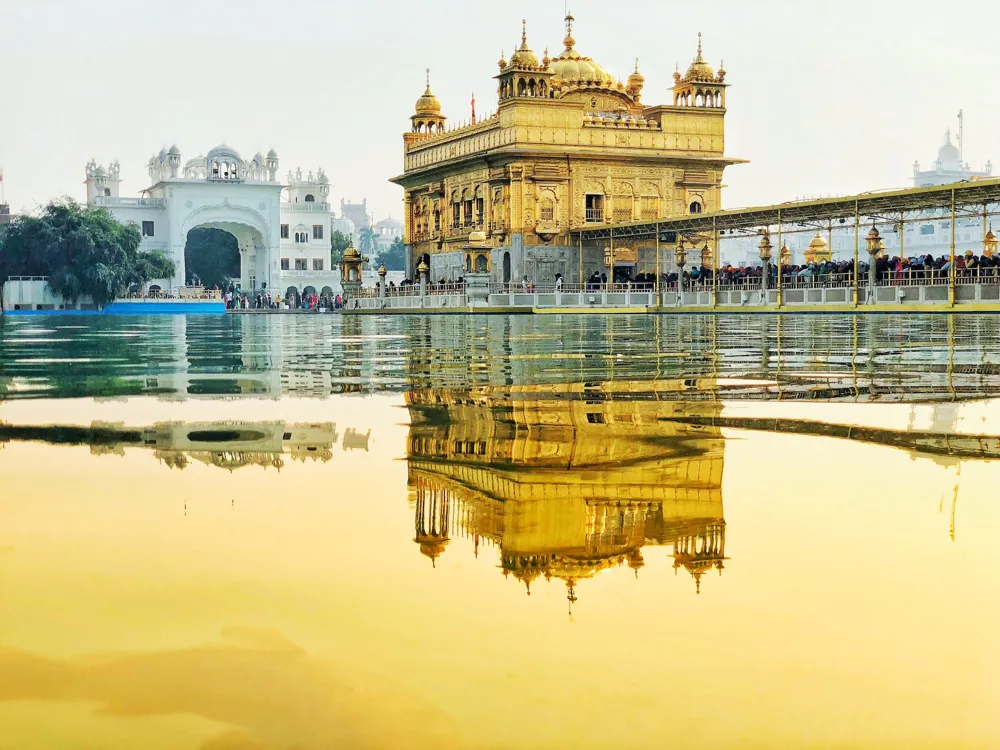
Gurudwara Chheharta Sahib is a Gurudwara in the village of Chheharta Sahib, located 8 kms away from Amritsar. One can take a direct bus (74663 Atari) from Amritsar to Chheharta or book a local taxi to reach the Gurudwara. Basant Panchami in the month of Magh attracts lakhs of devotees from around the country and is considered the most significant fair at this historic site. Kite-flying is a significant attraction of this festival, and there are many competitions held for the same. Vistors of this fair can find many men sporting the yellow turban during the festival. The local Gurudwara management organises free medical services during this occasion.
The Gurudwara was named after a massive well dug by Guru Arjan Dev to mark the birth of his son and successor Guru Hargobind. Due to the abundance of water, six Persian wheels were installed around the well to draw water at a faster pace, thus giving the name Chehharta. Although the well is now covered up, the water used to be pumped into the main tank of the Gurudwara.The well is believed to have curative properties and tourists can still see the Persian Wheels which have been preserved well. A local community now manages the Gurudwara, where a lotus dome encloses the square sanctum. The Gurudwara complex also consists of a divan hall and all-day langar where visitors can enjoy a meal as they visit this fascinating site.
Read More
Gurudwara Mata Kaulan
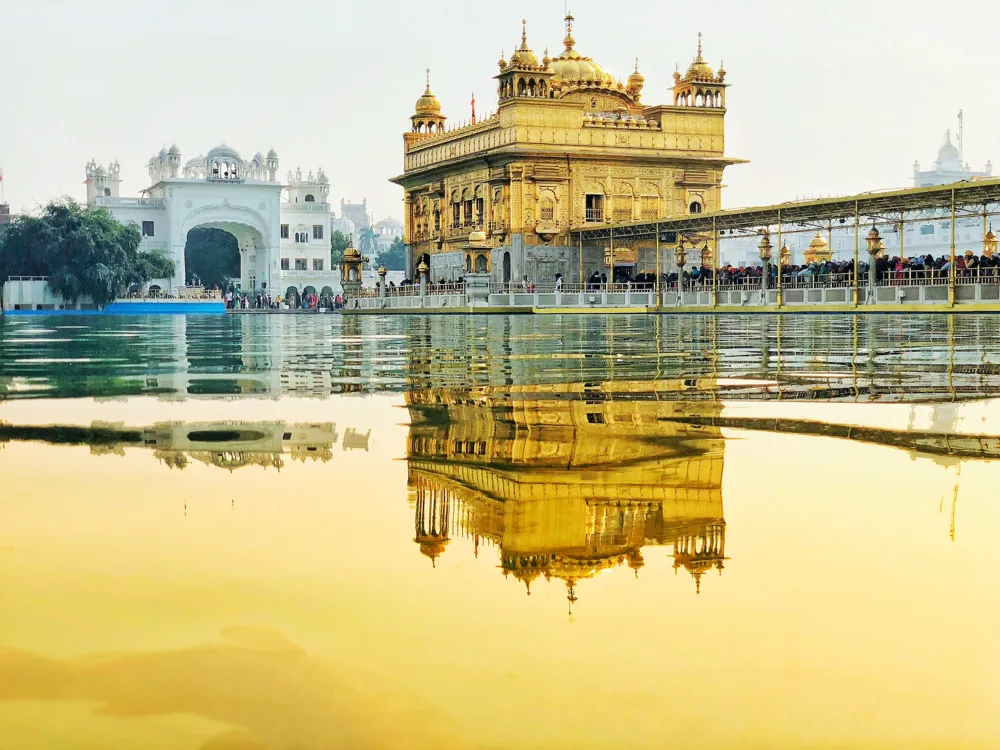
The sacred shrine of Mata Kaulan, also known as the Gurudwara Mata Kaulan, is located on the west side of the Golden Temple in Amritsar. This Gurudwara has been named after a legendary devotee of Guru Har Gobind, Bibi Kaulan. Her kirtans, which she sang religiously every evening, are still remembered by the older members of the Sikh community.
Kaulsar Sarovar, located next to the Gurudwara Mata Kaulan, is the holy place Guru Har Gobind advised devotees to take a dip in before proceeding towards the Amrit Sarovar. The Sarovar is also the first holy water tank to be named after a Muslim woman.
Read More
Tarn Taran Sahib
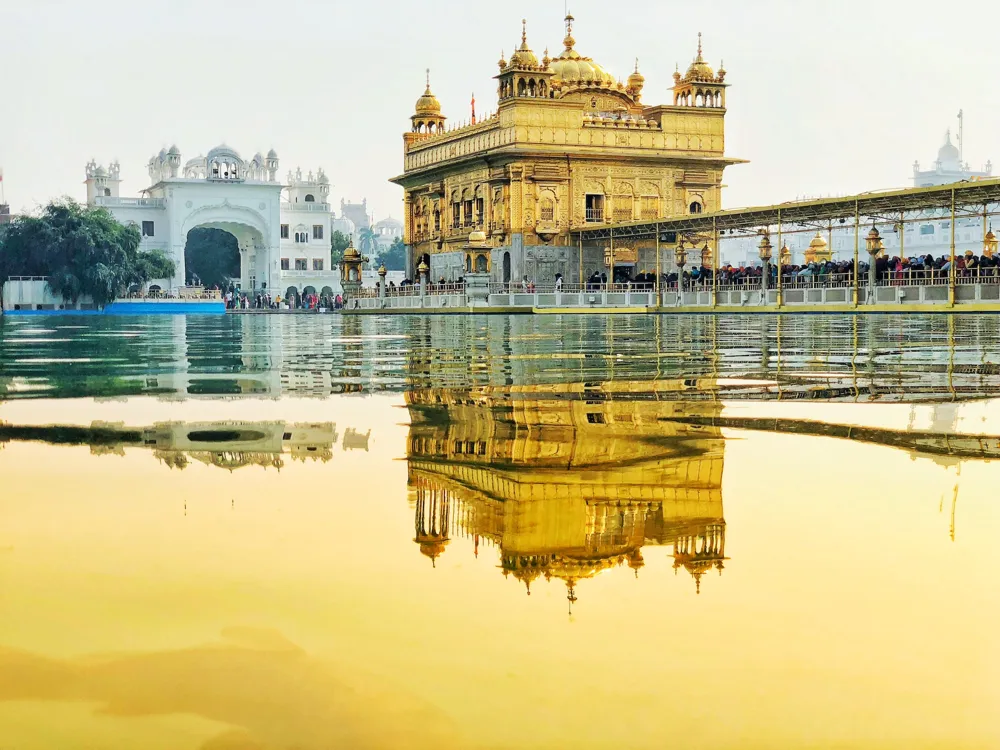
Gurudwara Shri Tarn Taran Sahib was built by the fifth Guru of the Sikhs, Guru Arjan Dev. It is located 22 kms from Amritsar, in the village of Tarn Taran Sahib. The name 'Tarn Taran' was given to the Sarovar which means 'a boat that takes one across the ocean of existence.' Built in the Mughal style of architecture, the gurudwara is famous for having the largest Sarovar. The lotus dome that covers the three-storeyed building was damaged during the 1905 earthquake. The holy Gurudwara sees kirtan recitals every day which start from the early hours of the morning and lasts until late evening, which the visitors to the site have the privilege of witnessing. It is also immensely famous for the gathering of pilgrims on the day of Amavas. Vistors and pilgrims believe that the Sarovar's water has medical qualities and is also said to be capable of curing leprosy.
The famous Gurudwara displays elegant stucco work reflecting on glass pieces and intricate designs on the ceiling and the inner walls. Only the upper section of the structure is covered in glittering gold sheets. The Guru Granth Sahib is placed on a platform under an elongated dome. This platform was an offering from Kanvar Nau Nihil Singh, Grandson of Maharaja Ranjit Singh. The main hall or Darbar Sahib of the building is plated in gold with a marble inlay. The flight of marble stairs behind this hall leads pilgrims to the spot where Guru Arjan Dev made the first cut for the digging of the magnificent Tarn Taran Sarovar in 1590. Over the years, additional buildings have been added to the complex.
Read More
Hall Bazaar Amritsar
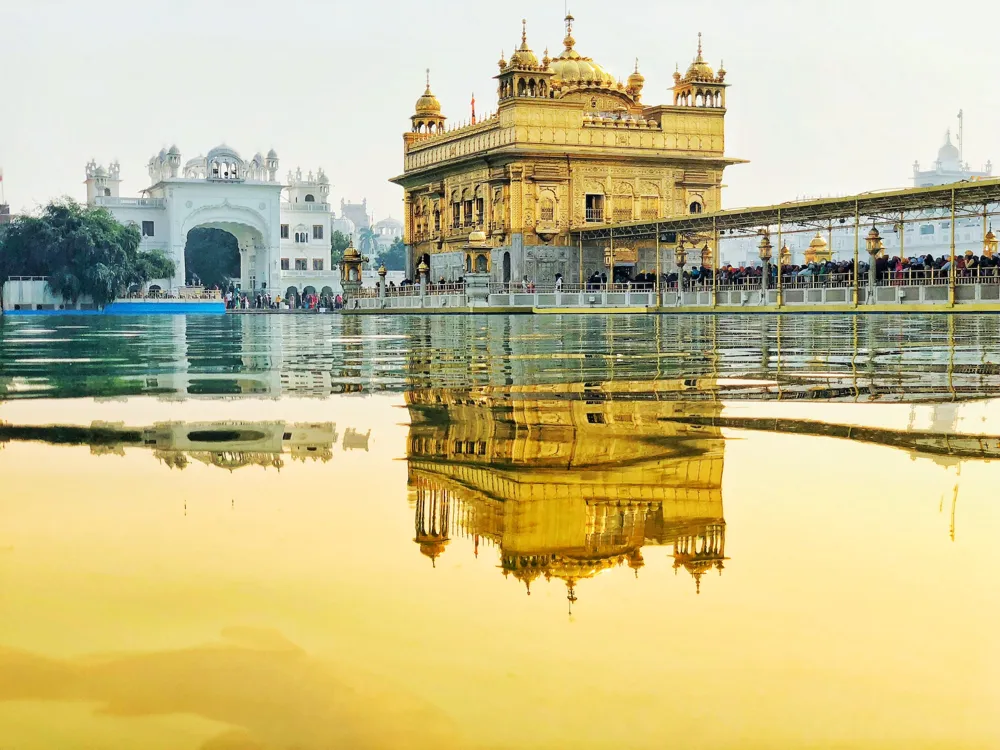
Located in Amritsar, Hall Bazaar is one of the oldest marketplaces in the country. One of the busiest shopping destinations of Amritsar, this historical bazaar is only 1 km from Amritsar railway station and only 1.3 km from the Golden Temple. The many stalls and shops here offer electronics, books, apparel, jewellery and ornaments, handiwork, Chinese lanterns, the world-famous Phulkari embroidery and Amritsari juttis among many other things.
Apart from the high octane shopping experience, the Hall Bazaar is home to some beautiful olden architecture including the Mughal archway entrance, called Gandhi Gate, complete with a giant clock with the caption 'Amritsar - Sifti Da Ghar'. The market is also home to some of the best restaurants and food stalls in the city offering mouth-watering Punjabi cuisine.
Read More
Harike Wetland
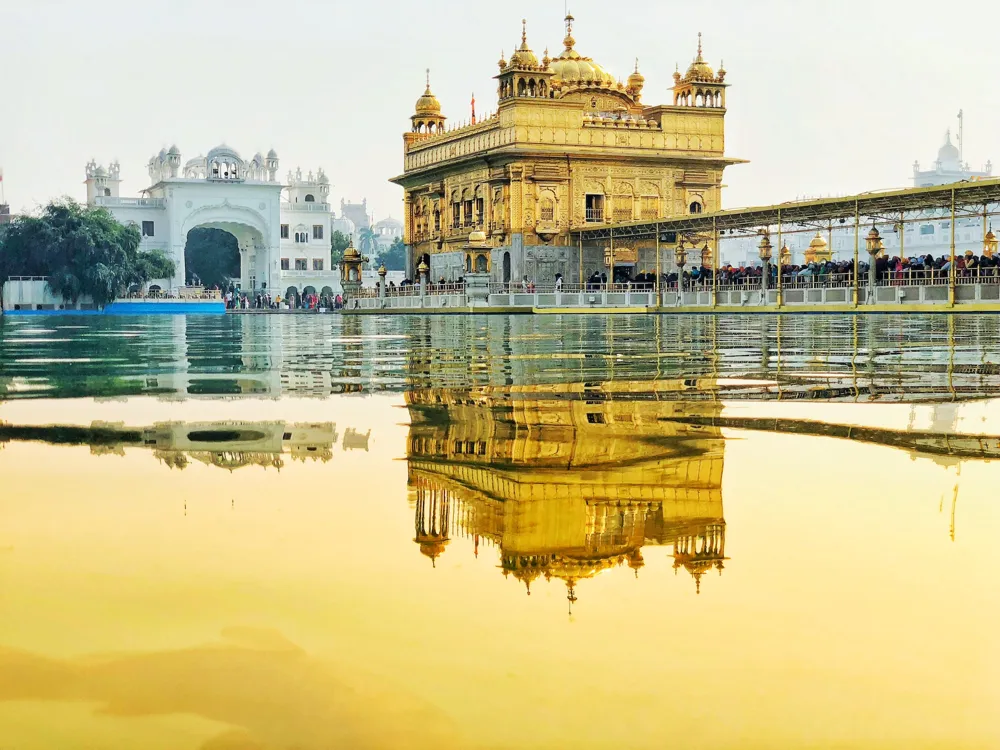
Considered to be the largest man-made wetland in northern India, Harike Wetland, also known as ‘Hari - ke - Pattan’ is situated on the border of Tarn Taran Sahib district. Sprawling over 4100 hectares of land area, the wetland is spread over Amritsar, Kapurthala and Ferozepur in Punjab. The highlight of the wetland is the gorgeous lake called the Harike Lake, that is situated in the heart of the region and that draws a large number of tourists to the place. There is also a bird sanctuary in the wetland that is known to attract hordes of birdwatchers and nature lovers.
Constructed in 1952, the wetland actually came to exist when a barrage was built at the confluence of rivers Beas and Sutlej. Boasting of a rich biodiversity, the park is considered a haven for birdwatchers as the wetland is home to a large number of exotic and endangered migratory birds who come here during the winter season. Till date, around 375 species of birds have been recorded here. Among the most popular wildlife include birds like crested pochard, common pochard and tufted duck, reptilian fauna like Indus river dolphin, smooth-coated otter and seven species of rare freshwater turtles, and mammals like Indian otter, the jungle cat, jackal, Indian wild boar and the common mongoose etc. The wetland was declared a sanctuary in 1982 and also a Ramsar site by the International Body of Wetlands under the UNDP in 1990. You are expected to take prior permission from forest officials for entry.
Read More
ISKCON Temple
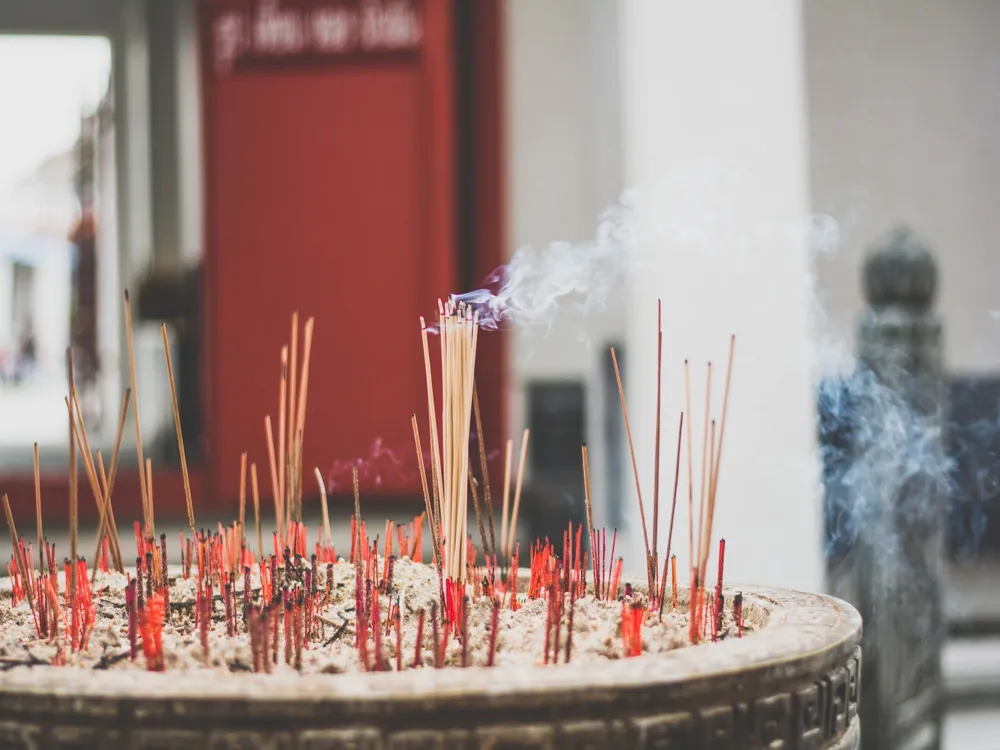
Situated in the heart of the city in Moni Chowk, ISKCON Temple (also known as Sri Gaur Radha Krishna Mandir) is a revered Hindu temple dedicated to the Hindu gods Krishna and Radha. The temple houses idols of several deities, Radha- Krishna being the most prominent. A tiny shop also sells statues of deities, religious books and related merchandise
Amritsar Travel Packages
View All Travel Packages Amritsar
Nearby Places Amritsar
Browse Package Collections
Browse Hotel Collections











